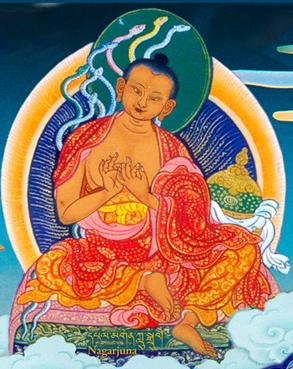Arya Nargarjuna
Mulamadhyamaka-karikas
Fundamentals of the Central Philosophy of Buddhism
 Section 4: An Analysis of the “Groups of Universal Elements” (the Aggregates)
Section 4: An Analysis of the “Groups of Universal Elements” (the Aggregates)
IV.1.
Visible form (rupa) is not perceived without the basic cause of visible form (rupakarana);
Likewise the basic cause of visible form does not appear without the visible form.
IV.2.
If the visible form existed apart from its basic cause, it would logically follow that visible form is without cause;
But there is nothing anywhere arising without cause.
IV.3.
On the other hand, if there would be a basic cause apart from visible form,
The basic cause would be without any product; but there is no basic cause without a product.
IV.4.
Just as when there is visible form no basic cause of form obtains,
So when there is no visible form no basic cause of form obtains.
IV.5.
Furthermore, it does not obtain that no visible form exists without a basic cause,
One should not construe any constructs concerning the form.
IV.6.
Just as it does not obtain that the product is the same as the cause,
So it does not obtain that product is not the same as the cause.
IV.7.
Also, sensation, thought, mental conception, conditioned elements (samskara) and
All “things” (bhava) are to be dealt with in the same way as visible form.
IV.8.
Whoever argues against “emptiness” in order to refute an argument,
For him everything, including the point of contention (sadhya) is known to be un-refuted.
IV.9.
Whoever argues by means of “emptiness” in order to explain an understanding,
For him, everything including the point to be proved (sadhya) is known to be misunderstood.
Source: Orientalia





